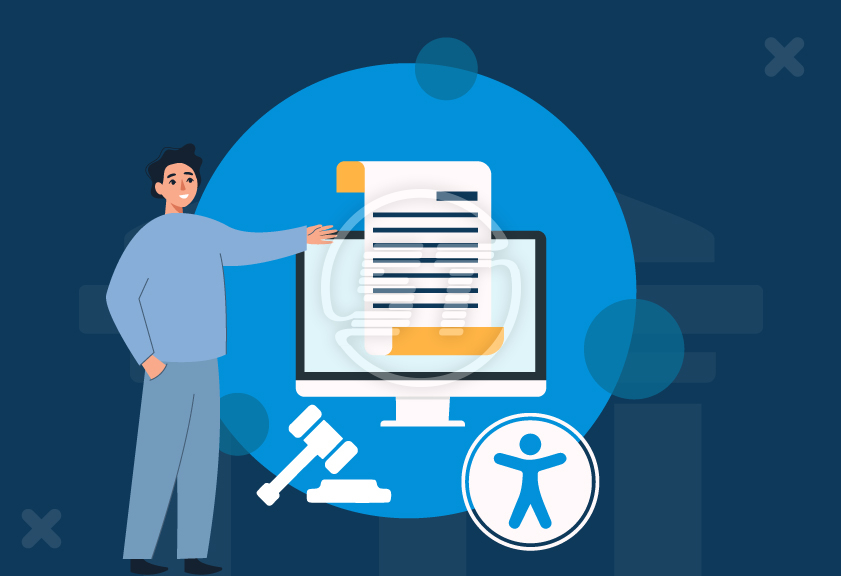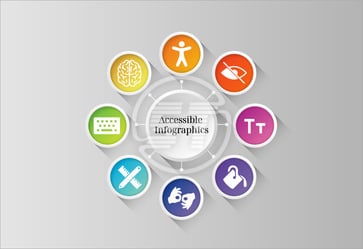As government services increasingly shift online, ensuring digital accessibility is not just good practice - it’s the law. And when the law mandates that all government entities should offer accessible digital content to every citizen, it becomes acute urgent for them to embrace these requirements without a delay.
For government IT teams, this means selecting web development vendors that understand and prioritize accessibility from the start. The stakes are high – non-compliance can result in lawsuits, federal investigations, and most importantly, exclusion of the very citizens public services aim to support.
So, how can government agencies be confident they’re partnering with the right vendors?
ADA Title II – What do we know about it?
Title II of the ADA prohibits disability-based discrimination by public entities – including state and local governments - across all their services, programs, and activities. The new requirements include all digital communications and web content.
Following the U.S. Department of Justice’s 2022 guidance, Title II requires public entities to ensure their websites and digital tools are accessible to people with disabilities, aligning with WCAG (Web Content Accessibility Guidelines) standards.
Please note, the ADA Title II was announced on April 24, 2024.
Important questions every government entity should ask their web development vendors to ensure ADA Title II compliance!
- Are vendors’ teams familiar with ADA Title II and WCAG 2.1 guidelines?
It matters because ADA Title II mandates accessibility across all digital products and services. WCAG 2.1 AA is the recognized benchmark for technical compliance.
Therefore, start with the basics. Ask vendors:
- Have they previously worked with government sector organizations?
- Are they up to date with WCAG 2.1 Level AA standards?
- Do they understand the legal obligations under Title II of the ADA?
- Will accessibility be built into the project from day one?
Accessibility should be part of every phase of design and development – not an afterthought. Thereby vendors should include accessibility checks in their standard development workflow.
Government agency should ask:
- Do they follow accessibility-by-design principles?
- Will wireframes, prototypes, and UI components be accessibility-tested early?
- How do they ensure semantic HTML, ARIA landmarks, and keyboard navigation?
- Can they provide documentation like VPATs or accessibility conformance reports?
A VPAT (Voluntary Product Accessibility Template) shows how a digital product or service aligns with accessibility standards.
Important to ask:
- Will they provide a VPAT or equivalent documentation for the digital solution?
- What conformance level does an entity’s product currently meet?
- Can government entities audit or verify accessibility claims independently?
- What testing methods do ADA vendors use to ensure accessibility?
A robust accessibility testing process is critical. And since automated accessibility testing tools alone miss many critical barriers - manual accessibility testing and real-user feedback are essential.
Don’t forget to ask:
- Do they conduct both automated and manual accessibility audit?
- Do they involve users with disabilities in usability testing?
- What assistive technologies do they test with (e.g., screen readers, voice navigation, screen magnifiers)?
Checkout our Free Accessibility Checker.
- Do the ADA vendors offer ongoing accessibility maintenance and support?
Accessibility isn’t a one-time fix – it requires ongoing upkeep. Government entities should ask:
- Will they provide accessibility updates post-launch?
- Is accessibility support included in the maintenance contract?
- How do they handle third-party updates or CMS/plugin compatibility issues?
Ideally, vendors should treat accessibility as a continuous service, not a quick fix.
- Will content management be accessible for editors too?
Internal teams keep creating and adding new content. So, it is important to know:
- Is the CMS they’re building/administering accessible for content editors with disabilities?
- Will they train team members on creating accessible content (alt text, headings, color contrast)?
- Can they provide accessible templates and media upload guidance?
Because a compliant CMS backend is often overlooked but is vital for long-term accessibility.
- How will they help the organization respond to accessibility complaints or requests?
Under ADA Title II, public agencies (government entity) must have a grievance process for accessibility barriers. Responsive vendors always reduce their legal and reputational risk quickly.
Ask:
- Will their team support the organization if accessibility issues are reported?
- How fast can they respond to critical issues?
- Can they help with documentation or crucial communication during audits or investigations?
- Have they worked with other government or public sector clients?
Their experience matters. Prior experience in government projects means vendors are likely familiar with procurement, compliance, and transparency expectations.
Thus, ask:
- Can they share references or case studies from public sector projects?
- What challenges did they solve related to accessibility?
- How do they handle compliance with related standards (e.g., Section 508, EAA)?
- Can the ADA Title II compliance deadline differ for various cities, counties, or states that the entity serves?
The Department of Justice (DOJ) has established deadlines for new ADA Title II accessibility compliance, which are different for government entities serving in various areas. The requirement is based on the population of the area.
Entities catering to 50,000 or more people are expected to be compliant by April 24, 2026.
If entities are serving fewer than 50,000 people, compliance should be implemented by April 26, 2027.
And special district governments are required to be compliant by April 26, 2027.
Government entities should ask one important question:
- Are the ADA Title II vendors well equipped to implement the compliance or not?
- What are the criteria for educational institutions to implement accessibility? Does it depend on the size of the school's capacity or its location?
If a school is in an area with 50,000 or more people living, then accessibility implementation is more crucial for them compared to areas with fewer than 50,000 people.
Thus, government IT teams should ask:
- Can vendors apply accessibility before the deadline?
- Are they aware of ADA Title II requirements?
- Do their digital offerings match the institute’s goals and objectives?
- What about PDFs or other documents’ accessibility? Are there any exceptions?
Five specific exceptions are:
- Preexisting conventional electronic documents.
- Archived web content.
- Individualized password-protected documents.
- Preexisting social media posts.
- Content posted by a third party.
Ask questions like:
- Do all PDF documents need to be compliant?
- How will they remediate existing documents?
- What if the attached documents are not used for any of the government programs or activities?
Explore our PDF accessibility remediation services.
- What to do with historical or archived social media posts?
Questions to be asked:
- Is there any exemption for such posts in the new ADA Title II requirements?
- What about posts made before the new ADA Title II requirements announcement?
- What if the post/content is only kept for recordkeeping?
- What should be done with a post when an individual with a disability requests access accommodation?
Also read: EAA vs. ADA: Digital Accessibility Compliance Guide
In a nutshell,
ADA Title II compliance is crucial for all government entities. It’s a commitment to inclusion and civil rights. And choosing the right web development vendor is one of the most strategic decisions a government IT team can make in this journey.
By asking the right questions upfront, government entities ensure that accessibility is built into their digital services correctly!
Need help navigating ADA Title II compliance for your digital platforms? Our ADA accessibility remediation services are tailored for public sector websites and applications. From audits to full-scale remediation, VPAT / ACR, monitoring and support, we help government IT teams meet legal obligations and build inclusive digital experiences. Let’s make accessibility a priority - connect with us at [email protected] for more information.


